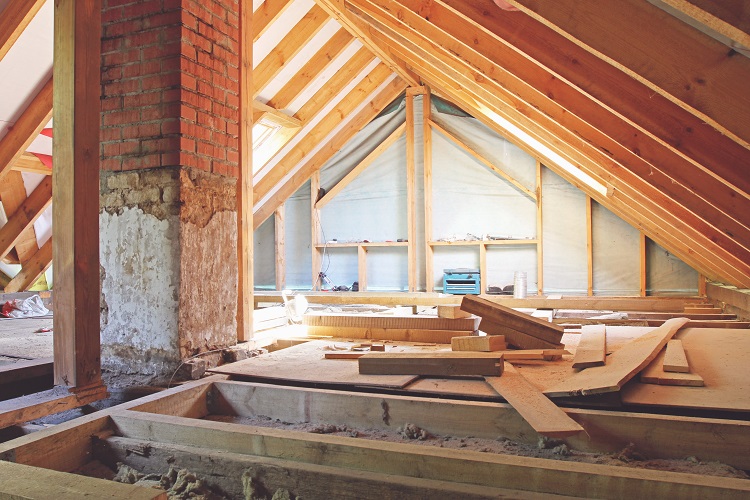Changes to the Attic Insulation and Ventilation Industry

Some people barely consider the insulation in their new home. After all, it is hidden in walls and attics where you never see it. In fact, it's sometimes a good feeling when that ugly looking stuff in the wall cavity is covered up and seen no more. You may say to yourself, “As long as the insulation meets code, I’m fine with it.” Or you may take pride in using the very best insulation system to keep heating costs down.
In my early years in construction, I would buy a couple old homes a year and remodel them on the side while working full-time in construction. I recall some homes had 1x10 boards as exterior sheathing underneath the siding, but no insulation in the walls. Other homes had 1x10 boards covered with rosin paper to stop air from flowing through the cracks. Then, as the years went by, asphalt felt paper replaced rosin paper due to deterioration issues. I recall one home even had newspapers inside the exterior walls for insulation. Those newspapers dated back to 1934!
Today, there are a ton of insulation products on the market for both residential and commercial buildings. Some products have been on the market for a long time, while others are brand new and still being refined. Let’s look at a few of these.
- Fiberglass batts are commonly used in walls and attics. Kraft-faced fiberglass batts have paper attached to one side. Unfaced batts are fiberglass only and do not have any type of facing.
- BIB (blown-in blanket) is when a netting is stapled to the face of the studs and loose-fill fiberglass is blown into the wall cavity, giving the wall a pillow-like feel.
- Cellulose is made of 80% post-consumer recycled newsprint treated with non-toxic borate to resist fire insects and mold. Cellulose is commonly used and can be blown into attics and walls. Some cellulose manufacturers have low-dust, blown-in material.
- Polyurethane spray foam insulation is available in two different types, open-cell spray foam and close-cell spray foam, and typically used in walls, garage ceilings, box joists, and utility penetrations. Special spray foam is available for use around windows and doors to reduce foam expansion and not affect window and door operation.
- Rigid foam board, commonly known as pink board, typically comes in 4x8 sheets and can be easily cut with a knife. Rigid foam board can be used on foundations, roofs, and walls in new construction and retrofit projects, and comes in a variety of thicknesses.
- Cementitious foam is a cement-based foam that is made of 100% organic magnesium cement. With an R-value similar to that of fiberglass, this product has recently caught on with green builders.
- Sheep wool is beginning to catch on more in U.S. markets. It is an all-natural, inherently fire-retardant material that is blown into a wall cavity, much like cellulose, and held in place with mesh.
- Mineral wool, also known as rock wool, is made from recycled slag mined basalt (volcanic rock). Mineral wool is fire resistant, often used as a fire stop between floors and walls, as well as highly sound absorbent.
- Cotton insulation comes in new perforated batts for easy installation and with R-values up to 30. With no formaldehyde or VOCs, this insulation can be found in 100% post-consumer recycled formulations.
- Foamglas that is a manufactured using up to 66% recycled glass from automobiles and old windows. This cellular glass material is 100% waterproof and is resistant to insects and vermin.
- Vacuum insulation panels (VIPs) are similar to the insulation in a thermos bottle. Used in insulating home appliances and water heaters, a 1-inch thick panel can provide an R-value of 25 or more.
- Gas-filled insulation panels are honeycomb foil-coated plastic panels that are filled with low-conductivity gases such as argon or krypton. Much like high-performance windows, these panels have an R-value from 5 to 11 at 1.5-inch thickness.
- Silica aerogel is a lightweight translucent material in a granule form that is filled in exterior glass wall panels and provides an R-value of up to 20.
When you are considering what insulation to use on your next project, you should think about more than R-value. Also consider fire rating, whether the material is non-hazardous, mold resistance, pest resistance, vapor barrier, and pricing. Many commercial building designs allow wall and ceiling insulation to be exposed, which makes appearance a factor as well. Doing your research and seeking advice from professionals can help you choose the best product for your project.
An insurance company that cares about you and insuring the things you wish to be insured.
Get a Quote> Find an Agent>

